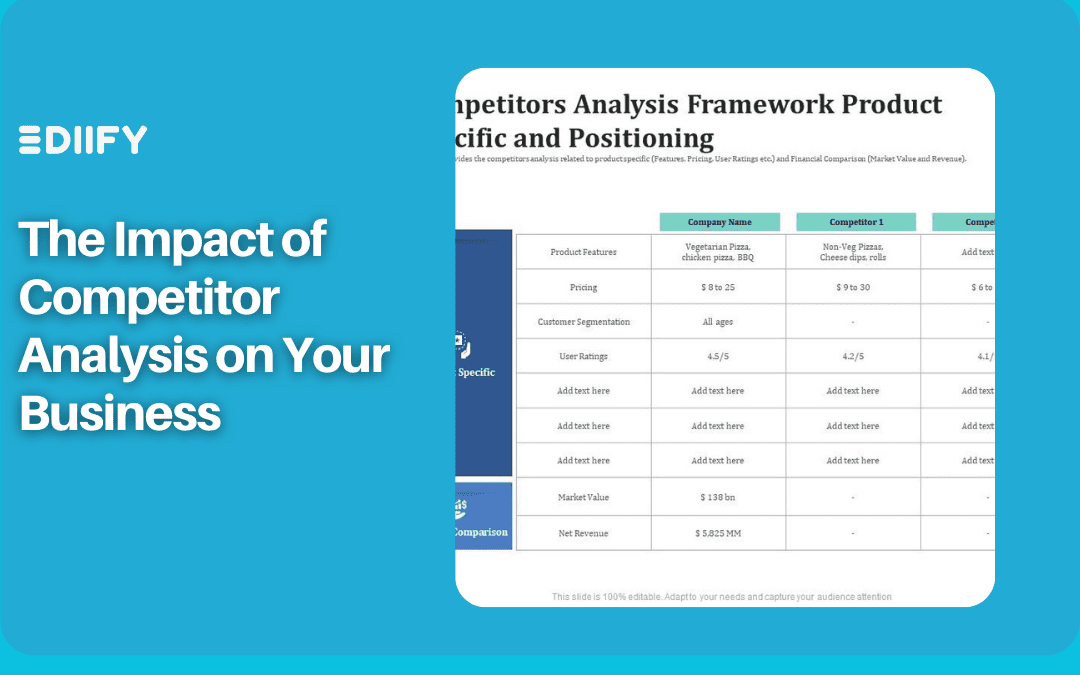
The Impact of Competitor Analysis on Your Business
Introduction:
In the fast-paced and competitive world of business, maintaining a competitive edge is crucial for success. Competitor analysis is a powerful tool that aids in achieving this edge by understanding the strengths and weaknesses of rivals, enabling informed decisions, identifying opportunities, and refining business strategy. example of competitor analysis.
Competitor analysis involves gathering and assessing data on competitors, providing insights into their market positioning, product offerings, marketing strategies, and overall performance. This blog explores the significance of competitor analysis through a real-world example, demonstrating how this practice can drive success.
Let’s delve into the tech industry and explore the hypothetical case of XYZ Corporation, a company specializing in smartphone design and manufacturing. This example illustrates the various aspects of competitor analysis and its practical applications.
1. Identifying Competitors:
Start by identifying key players in the smartphone industry. XYZ Corporation’s competitors may include major brands such as ABC Electronics, PQR Mobiles, and LMN Devices. example of competitor analysis.
| 2. Market Share Analysis: |
Conduct a thorough analysis of market share. Suppose XYZ Corporation discovers that ABC Electronics holds the largest market share. This insight prompts XYZ to investigate the factors contributing to ABC’s success, guiding the establishment of realistic growth targets and strategies. example of competitor analysis.

3. Product Analysis:
Evaluate the features and specifications of competitors’ smartphones. If PQR Mobiles recently introduced cutting-edge camera technology, XYZ can leverage this information to innovate their products or emphasize other unique features. example of competitor analysis.
take a look at the example of competitive analysis
https://asana.com/resources/competitive-analysis-example
4. Pricing Strategy:
Analyze the pricing strategies of competitors. If LMN Devices offers similar features at a lower cost, XYZ may need to reassess its pricing structure or enhance its value proposition.

5. Marketing and Branding:
Examine the marketing and branding strategies of rivals. If ABC Electronics has a strong online presence and engaging social media campaigns, XYZ can adopt similar tactics to enhance brand visibility.
6. Customer Reviews and Feedback:
Explore customer reviews and feedback for competitors’ products. Understanding what customers appreciate and criticize allows XYZ to refine its products and customer service.

7. SWOT Analysis:
Perform a comprehensive SWOT (Strengths, Weaknesses, Opportunities, Threats) analysis for each competitor. This holistic view enables XYZ to identify areas where they can outperform and mitigate potential risks.
Conclusion:
Competitor analysis is not a mere theoretical exercise; it is a strategic imperative for businesses aiming to thrive in competitive markets. By examining the example of XYZ Corporation in the tech industry, we observe how a systematic approach to competitor analysis can guide decision-making, foster innovation, and contribute to long-term success.
In a world of constant change, staying informed about the moves and strategies of competitors empowers businesses to adapt, evolve, and position themselves as industry leaders. Embrace competitor analysis as a dynamic tool in your business arsenal, and you will be better equipped to navigate the competitive landscape and chart a course towards sustainable growth.
Take a look at the dynamic of Amul competitors
https://ediify.com/project/exploring-the-dynamics-of-amul-and-its-competitors/




